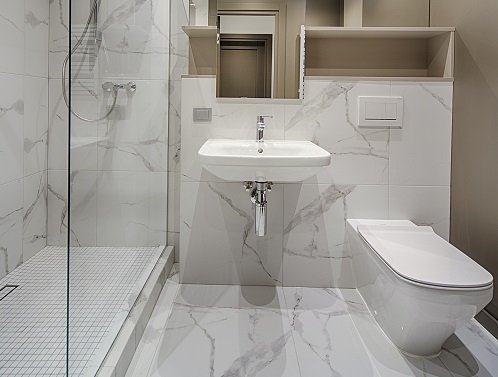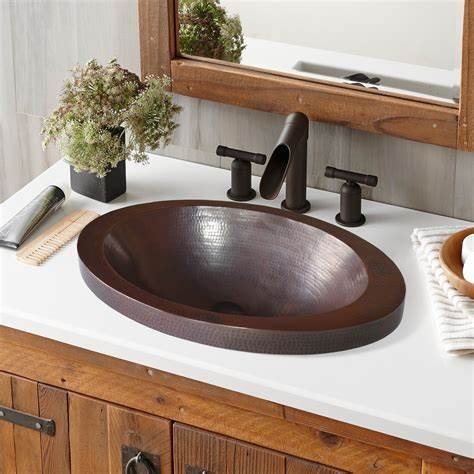P-Traps are an essential component in plumbing systems that help prevent foul odors and gases from entering our living spaces. Most of us are familiar with the traditional P-Trap design, where water remains in a U-shaped pipe to create a barrier.
However, there has been some confusion and debate over reverse P-Trap installation and whether or not a P-trap can go btoh ways.
A P-trap is designed to work in a specific orientation, which is to create a water seal that prevents sewer gases from entering a building while allowing wastewater to flow through.
It cannot be reversed or installed “upside down” because doing so would break the water seal and compromise its function.
Attempting to install a P-trap in the wrong orientation can lead to unpleasant odors and potential health hazards from sewer gas leakage.
To ensure proper plumbing function and safety, it’s crucial to install a P-trap as per the manufacturer’s guidelines, with the curved portion (the trap) in the downward position to maintain the water seal.
1. How a P-Trap Works
Before diving into the concept of the reverse P-Trap, let’s first grasp the basics of a traditional P-Trap. A P-Trap is a plumbing device that is commonly found beneath sinks, bathtubs, and other fixtures to trap a small amount of water. This water creates a seal that prevents sewer gases, insects, and odors from entering the living spaces.
The traditional P-Trap is shaped like a “P,” hence the name, and comprises two main sections: the vertical tailpiece that connects to the drain, and the horizontal trap arm that connects to the waste pipe. The water sitting in the U-shaped section of the trap is what forms the barrier.

2. What is a Reverse P-Trap?
A reverse P-Trap is the term used to describe a P-Trap that has been installed in a way that deviates from the traditional orientation.
Instead of having the U-shaped bend, a reverse P-Trap may have an inverted U-shape or be configured in a manner where the water barrier is on the opposite side. This can happen accidentally or intentionally due to incorrect installation or for specific plumbing requirements.
3. Potential Risks of a Reverse P-Trap
While a reverse P-Trap might seem like a simple variation, it can lead to several issues and risks:
- Loss of Water Seal: The primary purpose of a P-Trap is to create a water seal that prevents harmful gases from escaping the drainage system. In a reverse P-Trap, the water seal might not be as effective, leading to foul odors and potential health hazards.
- Drain Blockage: Reverse P-Traps can become more susceptible to clogging since debris and sediment may accumulate differently compared to a traditional P-Trap. This can lead to slow drainage or complete blockages.
- Air Circulation Issues: In some cases, a reverse P-Trap might allow air to flow back into the drainage system, which could disrupt the proper functioning of plumbing fixtures.
4. Reasons for Installing a Reverse P-Trap
Though not recommended for general plumbing applications, there are certain situations where a reverse P-Trap might be used intentionally for specific reasons:
- Limited Space: In cramped spaces where traditional P-Traps cannot fit due to design constraints, a reverse P-Trap may be used to accommodate the plumbing fixture.
- Installation Challenges: In some retrofitting scenarios, the existing plumbing layout may necessitate a reverse P-Trap to align with the waste pipe’s location.
- Siphoning Concerns: In rare cases, a reverse P-Trap may be used to prevent siphoning of water from nearby fixtures, which can occur in specific plumbing setups.

5. Practical Solutions and Alternatives
If you find yourself with a reverse P-Trap or are considering its installation for specific reasons, here are some practical solutions and alternatives to address potential risks:
- Consult a Professional Plumber: If you suspect that you have a reverse P-Trap in your plumbing system or need to install one for unavoidable reasons, it is essential to seek the advice of a professional plumber. They can assess the situation, identify potential risks, and suggest appropriate solutions.
- Install an Air Admittance Valve (AAV): To prevent air circulation issues, you can consider installing an AAV (Air Admittance Valve) in conjunction with the reverse P-Trap. An AAV allows air to enter the drainage system while still preventing the escape of sewer gases into living spaces.
- Regular Maintenance: Whether you have a traditional or reverse P-Trap, regular maintenance is crucial to keep your plumbing system functioning optimally. Periodically check for blockages and clean the trap to ensure a smooth flow of water.
- Consider Alternatives: In situations where space is limited or installation challenges arise, consider alternative plumbing fixtures or designs that may not require a reverse P-Trap.

Conclusion
While the concept of a reverse P-Trap may raise curiosity, it is essential to understand the potential risks and implications associated with its usage.
In general plumbing applications, a traditional P-Trap should always be used to ensure the effective functioning of the plumbing system and to prevent health hazards.
In rare cases where a reverse P-Trap is necessary, consulting a professional plumber and implementing appropriate solutions can help mitigate potential risks and maintain a well-functioning plumbing system.
Remember, the role of a P-Trap goes beyond just trapping water; it safeguards our living spaces from harmful gases and plays a vital role in maintaining a healthy and safe environment.






